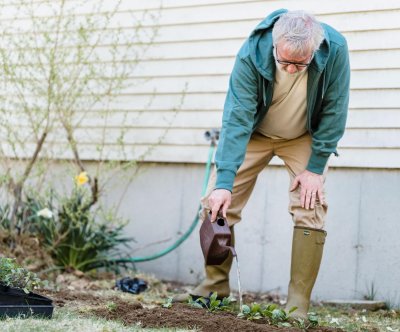Falls among seniors represent a pressing public health concern, with significant implications for well-being and mortality, as highlighted by the World Health Organization. According to data from the Centers for Disease Control and Prevention (CDC), approximately one in four Americans aged 65 and above experiences a fall each year, a figure that is on the rise.
The recent passing of former U.S. Senator Joe Lieberman at the age of 82 following complications from a fall underscores the severity of these incidents and their potential consequences for older adults.
Notable personalities like Nancy Reagan have also faced the consequences of falls, sustaining serious injuries such as fractures. Dr. Elizabeth Phelan, an expert in falls prevention, stresses the preventable nature of these accidents, emphasizing the importance of awareness and understanding of risk factors. While age-related changes in factors like gait, strength, and balance contribute to falls, interventions can significantly reduce their occurrence.
Understanding the Impact and Prevention of Falls Among Seniors: A Critical Public Health Concern (Credits: Right At Home)
A myriad of factors contribute to the heightened risk of falls among seniors, including vision and hearing impairments, chronic health conditions, medication usage, alcohol consumption, and environmental hazards. Dr. Amanda Lathia underscores the importance of practical measures such as proper footwear and home modifications to mitigate these risks, particularly in high-risk areas like bathrooms.
Injuries resulting from falls range from fractures to head trauma, with hip fractures significantly increasing the risk of mortality, particularly in the immediate aftermath of the incident. Dr. Laurie Theriot emphasizes the paradoxical nature of restricting activities due to fear of falling, which can exacerbate the risk. Instead, maintaining mobility and activity levels is crucial for fall prevention and recovery.
Timely medical intervention, including physical and occupational therapy, as well as assessments of the home environment, play pivotal roles in fall prevention and management. Regular medication reviews are also essential, especially for older adults with memory issues, to mitigate the risks associated with certain medications. Fall prevention strategies encompass exercise to maintain physical health, routine medical checkups, and environmental modifications.
Ultimately, the outcome of fall-related injuries hinges on various factors, including age and overall health status. While hip fractures and head injuries pose significant risks of morbidity and mortality, proactive measures can mitigate these risks and promote the well-being of older adults.
